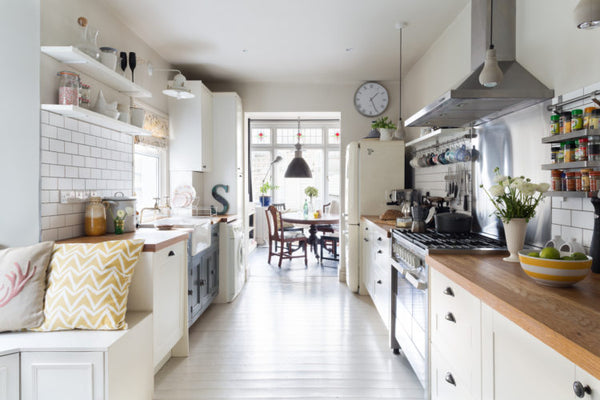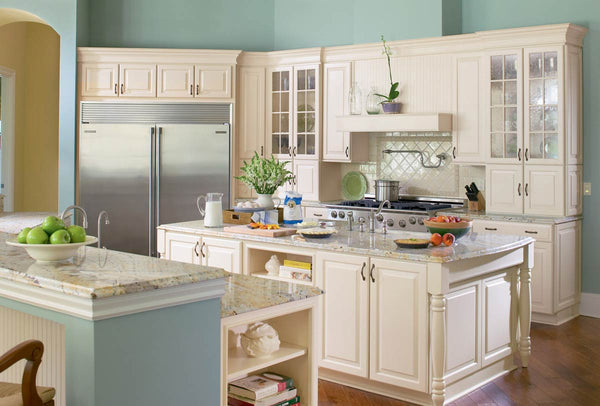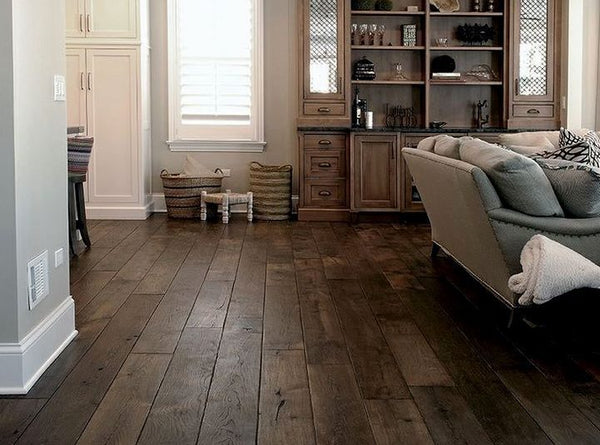A Spring Cleaning Guide - Part One
These tips will efficiently guide you to a spotless spring home. Part 1 of 2.
Before You Begin
A top-to-bottom method is recommended: start with ceilings and high shelves, then work your way down toward eye-level surfaces and then lower shelves and upholstery before tackling floors. This way, dust and debris that settles on the floor can be vacuumed or swept at the end. We will follow this method for this spring cleaning checklist.
Ceilings and Walls

Ceilings
Use a broom to remove dust on the ceiling, twirling it like you would spaghetti on a fork to avoid getting it stuck to the surface. Use a flat-head mop and a sturdy ladder to clean grimy areas after dusting. You can use warm, soapy water as a cleaning solution, or, if you use a solvent, test it on a small, unnoticeable area to make sure it won’t discolor the surface. While working up high, don’t forget to dust ceiling fan blades.
Walls
Before tackling paint chips and drywall gouges, clean painted walls with warm water and a sponge or cloth. For tough stains and imprints, use dish soap mixed with warm water. For the really persistent ones, add a few drops of dish soap directly to the sponge or cloth. When you’re done, rinse the cleaned areas with warm water to remove any residue from soap or grime.
Have noticeable wall damage? Repair smaller drywall gouges and nail holes with spackle and a putty knife, making sure to fill the hole completely. Then, smooth the surface with the knife, removing all excess spackle. Wait until the spackle is completely dry to paint over it. For large holes and more extensive drywall damage, you may look to use an adhesive drywall patch.
For paint touch-ups, if you have more of the same paint color on hand that was used on your walls, touch up any offending areas after the wall is clean and completely dry. If not, you can chip off a bit of the paint color and take it to a hardware store to have them match the color. Make sure you know before making the trip whether the existing paint is glossy, flat, satin, etc.
Cabinets

Cabinets are often the unwitting receivers of life’s little messes. We all know how quickly dirt and grime can build up on cabinets, especially in the kitchen. A cabinet cream designed specifically for the task will clean what doesn’t belong and moisturize the wood. If you choose a cleaning product that could stain, ensure that it comes in the same color as your cabinet wood.
Windows, Window Treatments & Screens

Windows
Tackle dirty windows with a stack of newspaper at the ready (cleaning with crumpled-up newspaper eliminates streaks when used with glass cleaner) or try lint-free cloth, such as huckaback cloth or cloth diapers. Washing cloth with fabric softener can leave behind streaks, so running cleaning cloths through the wash without fabric softener before using them to clean is recommended if they have been washed with fabric softener.
Window Treatments and Screens

Check the care labels to make sure window treatments are machine washable before laundering them. Dry clean anything that cannot be tossed into your washing machine, such as fabric shades. Clean wooden blinds with a damp cloth. Metal and vinyl blinds can be cleaned with warm, soapy water and a sponge.
To clean screens, simply scrub with soapy water and a cleaning brush, and rinse thoroughly when done.
Floors

Hardwoods and Laminates
Experts recommend mopping (or otherwise wet-cleaning) wood floors once every one to two months and spot-cleaning as needed in between mopping. Wet-cleaning wood floors more often could cause damage over time. Check furniture around the house and add protective pads to protect wood and laminate flooring from scuffs and scratches, and make sure houseplants have saucers or trivets under them to prevent them leaking onto surfaces.
Once cleaned, you can restore shine to vinyl and linoleum by waxing with a polish designed specifically for the purpose. Stone and tile floors can also be waxed with a specialty liquid or paste.
Carpets
High-traffic areas may only need steam-cleaning three to four times per year. Less-traveled areas may only need cleaning once or twice per year.
Tiled Surfaces
For a natural, chemical-free solution, try using baking soda. Simply mix ½ cup of baking soda into two gallons of water and stir until it’s completely dissolved. You can use this solution to mop tile floors and to scrub grout.
